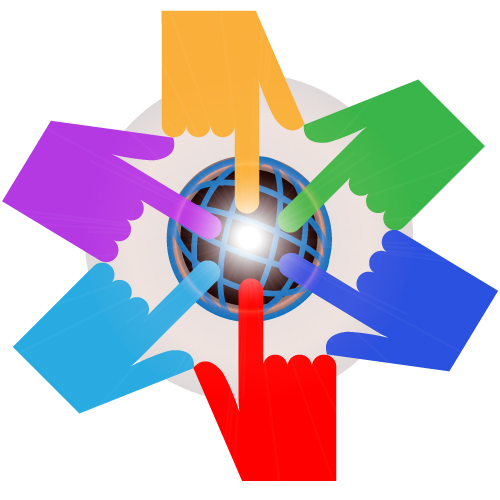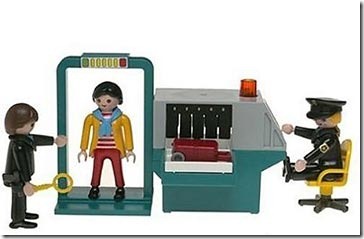Crisis Mapping Crisis mapping is a relatively new field—there’s not much research, no journal, and the Harvard Humanitarian Initiative (HHI) and the Department of Political Science at John Carroll University (JCU) jointly hosted the first International Conference on Crisis Mapping only in October 2009. So this is a NEW field of study and practice, but there is a thriving group of practitioners with Patrick Meier (one of the developers of Ushahidi) being one of the leading members. Since I’m working on organizing a conference proceedings for ICT & Human Rights, it seemed necessary to define a few terms in this subject area filled with TLA (three letter acronyms). There are some important terms that are being developed to help parse the field and make sense of the different aspects of the problem. Here’s a breakdown: Crisis Mapping can be divided into three main components: Crisis Map Sourcing (CMS)—this is all about data point collection Crisis Map Coding (CMC)—refers to entering the data points by hand, based on analysis of news, police reports, blogs, and so on, but the person entering the data is a professional Participatory Crisis Mapping (PCM)—refers to data points entered by the population in crisis, requires people…
Pipsqueak Articles
Posts written by Olga Werby or Christopher Werby
Cognitive Blindness, Mental Model Traps, Pipsqueak Articles, Product Design Strategy, Users
How Users Really Feel…
by Olga Werby •
Sometimes during the design process, there’s a real tension between the audience needs and the client desires. As product designers, it’s our job to resolve this tension in favor of the user (as long as the client’s business needs are still being met by the design). But sometimes, we lose: Enjoy!
Flow, Pipsqueak Articles, Product Design Strategy
Emotional Design—Because Products Should Be Fun!
by Olga Werby •
“I want one!”—a reaction every designer wants! A good product design doesn’t only address the functional needs of its audience and the business needs of its developers. A good product goes father—it facilitates fun, it generates flow, it produces a visceral reaction even from people who are simply watching a demo video…
Conceptual Design, Cultural Differences, Pipsqueak Articles, Product Design Strategy
ICT & Human Rights: A Round Table Discussion at IADIS 2011 Conference
by Olga Werby •

IADIS conference on ICT, Society and Human Beings, Rome, July 24-26, 2011 Proposal for a Joint Multi-conference Session Title: ICT and Human Rights: A Round Table Chair/Organizer: Olga Werby Background and Purpose Information and Communication Technologies (ICT)—internet, web, and social media—are fast becoming a comprehensive repository and soon an archive of human knowledge. With access to ICT, an individual can become informed on everything from healthcare issues to civic problems to legal concerns. One hundred years ago, people were discussing the need for basic literacy and its impact on the human condition. Today, we should be discussing digital literacy and access in the same way. Digital literacy can be seen as a basic human right. Individuals can also impact society, react, and reach out. ICT is both a powerful tool for materializing human rights and is also challenging human rights. I propose a Round Table Session, which is open to all participants of IADIS multi-conferences, to be titled “ICT and Human Rights.” This session would provide a forum on cross-disciplinary research and development, and action, in the fields of what rights are important and can be better facilitated by ICT in: e-Democracy, ICT and Society, e-Culture, e-Health, e-Learning, human-computer interaction,…
Anchoring Errors, Background Knowledge Errors, Causal Net Problems, Diagnostic Errors, Errors, Mental Model Traps, Pipsqueak Articles
Alternative Medicine, Placebos, and Rasputin
by Olga Werby •

In the last few weeks there has been several articles and studies published on the effectiveness of alternative medicines and placebos: “Placebos Help Patients Even Without Faking It, Scientists Say“; “Sugar Pills Help, Even When Patients are Aware of Them“; and “Alternative remedies ‘dangerous’ for kids says report“; “Doctors warn over homeopathic ‘vaccines’“. The gist of these beliefs derives from several factors: People Tend to Get Better: most of us get well over time even without medical intervention. Colds pass; flues do too. Most infections heal with time without the aid of antibiotics. Evolution have provided the human race with a great immune system. Medicine helps, we get better faster with treatment. But in most cases, we survive. So when you hear someone recommend an alternative medicine and predict that a cold will go away in three days, chances are you will get better. And over time, we the people develop p-prims (folksy wisdoms) that link health with alternative tratments. “Natural Chemicals” p-Prims: there is a strong belief among industrialized societies, at the present time, that “natural” is better for us than “artificial”. There are many sources of this belief, too many to cover in this short article. And somehow,…
Cultural Bias, Ethnographic & User Data, Pipsqueak Articles, Users
Weird Behavioral Science
by Olga Werby •
Anchoring Errors, Causal Net Problems, Cognitive Blindness, Conceptual Design, Cultural Bias, Cultural Differences, Errors, Group Decision Errors, Mental Model Traps, Mirroring Errors, Misapplication of Problem Solving Strategies, Pipsqueak Articles, Product Design Strategy, Scaffolding
TSA: the Good, the Bad, and the Ugly
by Olga Werby •

There has been a lot of stories lately about the Transportation Security Administration (TSA), and most have been less than flattering (to say the least). How can an agency that was designed to “serve and protect” the citizens of the United States from harm evoke such wrath from ordinarily shy and non-vocal travelers? This blog is about product design, and so my analysis of the situation will treat this as a failure of product design. Where are the failures? Mistake #1 TSA Conceptual Design: Blocking There are bad guys out there that want to do us—citizen travelers from US—harm. There are the box-cutter carrying terrorists, the shoe-bombers, the liquid explosives bandits, the underwear-bombers, the printer cartridge explosives engineers. TSA installed airport security measures that would counteract each of these threats as they revealed themselves. The basic conceptual design strategy here is blocking: identify a threat and find an effective block. This is a strategy based on hindsight: if we knew that people could sneak bombs in their underwear, then we would have had a way to block it. We didn’t know, but now we do, and so we created systems to block this threat in the future. TSA Game Plan: Escalating…

